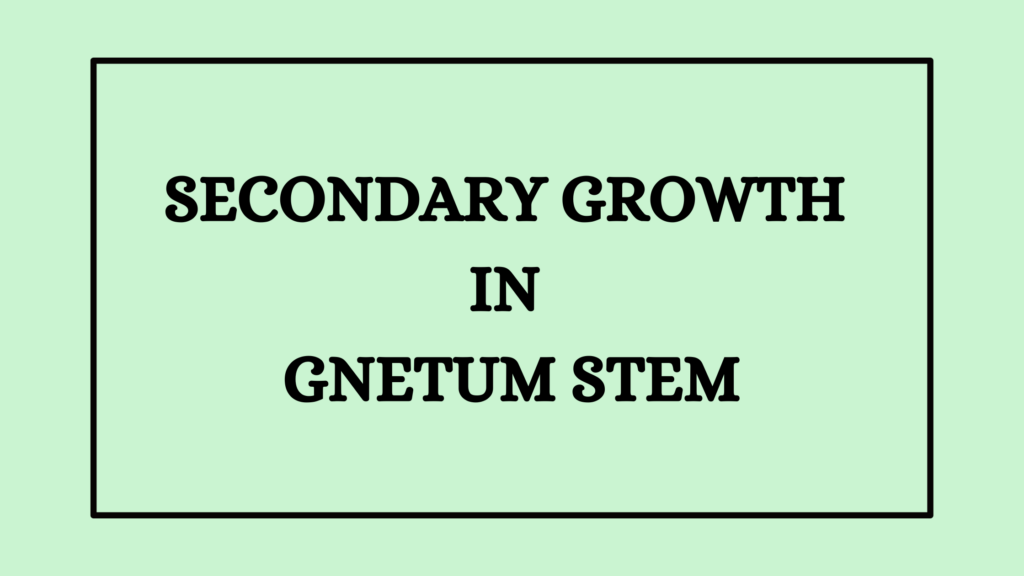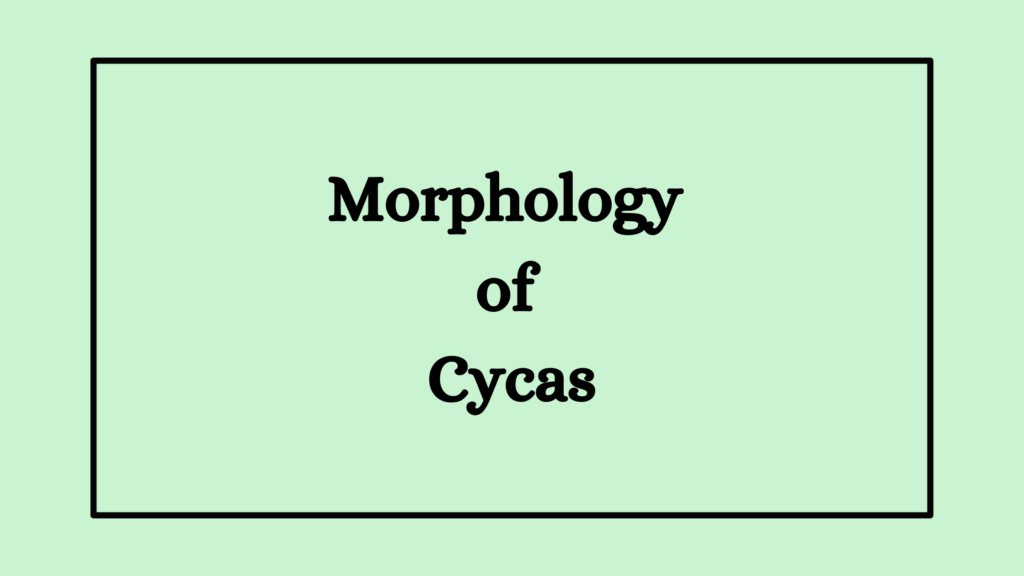Most shrubs and trees exhibit secondary growth in their stems. Gnetum is also the same. Gnetum gnemon shows normal secondary growth while G.alba shows anomalous secondary growth. In the abnormal secondary growth, the Gnetum stem shows several concentric and eccentric cambium rings.
Normal Secondary Growth in Gnetum Stem
Normal secondary growth in G.gnemon occurs by the formation of an interfascicular cambium that joins with a fascicular cambium to form a complete ring. The fascicular cambium cuts the secondary xylem towards the inside and the secondary phloem towards the outside. The interfascicular cambium cuts the medullary rays.
The newly formed vascular cambium cuts off xylem initials towards the inside. This will give rise to the secondary xylem. The phloem initial is pushed towards the outside to produce the secondary phloem. The amount of secondary xylem is more than the secondary phloem. Moreover, the cambium gives rise to the medullary rays as well.
Secondary Xylem
The secondary xylem in the Gnetum stem consists of tracheids, vessels, and xylem parenchyma.
Tracheids
Tracheids are elongated narrow cells with tapered ends.
- They have thickened walls having lignin making the lumen narrow.
- Uniseriate bordered pits are seen on both radial walls and tangential surfaces.
- The bordered pits are spirally arranged.
Xylem Vessels
Vessels are elongated cells with pointed ends.
- They possess bordered pits on their walls.
- Perforations are seen in the end walls.
- They may be single or arranged in a row.
- There also are elements that show a transitional stage between tracheids and vessels.
Secondary Phloem
The secondary phloem is formed of sieve cells, phloem parenchyma and albuminous cells.
Sieve Cells
Sieve cells are thin, elongated cells with blunt or tapered ends.
- They are arranged in vertical rows.
- They have sieve plates on the end walls and lateral sides.
- Sieve plants represent sieve areas and have groups of pores. This is called sieve fields.
- Young phloem contains p-protein in the form of amorphous granules or threads.
Phloem Parenchyma
Phloem parenchyma alternates with sieve cells and is arranged in rows.
- They elongate vertically, lack starch and have thin walls.
- They resemble companion cells but lack connection with sieve cells.
Albuminous Cells
Albuminous cells are narrow, elongated, and thin-walled cells.
- They are either scattered or arranged as files.
- They are half the length of phloem cells and are associated with sieve cells through small sieve areas.
- These cells contain protein.
Secondary Medullary Rays
Medullary rays are radial systems of cells formed from ray initials. They are radially elongated with thin or thick walls. Medullary rays contain calcium oxalate crystals.
They pass through the xylem and phloem to form the lateral conductive organs. Young stems have uniseriate or biseriate rays but mature stems have multiseriate rays.
Walls of medullary rays have simple pits. They form sclerification and appear boat-shaped in the tangential division.
Anomalous Secondary Growth in Gnetum Stem
The anomalous secondary growth in G.alba starts when the activity of the normal cambial ring stops. It takes place outside the secondary phloem and from the parenchyma cells. This secondary growth cuts the secondary xylem towards the inside and the secondary phloem towards the outside.
Opposite to the xylem, the secondary xylem and phloem are formed as conjoint collateral secondary bundles, rather than a continuous ring. These bundles are separated from each other by broad parenchymatous medullary rays that are formed from the cortex.
The activity of the secondary cambium also stops after a while. After this, a third ring of cambium develops outside and continues the secondary growth. This way, successive rings of cambium develop one after the other, giving rise to concentric rings of secondary vascular bundles.
Some of the outer cambial rings remain incomplete towards the side where the stem is pressed against the support. This results in the formation of eccentric accessory rings of vascular bundles.
Secondary Xylem
The secondary xylem consists of tracheids, xylem parenchyma and vessels. The presence of vessels is a characteristic feature of Gnetum which is not common in gymnosperms.
- Tracheids are long, thick-walled and possess uniseriate circular bordered pits.
- Xylem parenchyma cells are short and possess simple pits.
- Xylem vessels are spindle-shaped and have large perforations on their end walls. However, transitional stages from a single row of simple perforations to a single perforation are seen on their end walls.
Secondary Phloem
The secondary phloem consists of sieve cells, phloem parenchyma, and phloem fibers. In some older stems, the cork cambium (phellogen) develops the epidermis. This cambium cuts the cork towards the outside (phellum) and parenchymatous cells towards the inside (phelloderm). The cork is intercepted at many places due to the presence of lenticels.
References
- Abraham P C. Bryophytes, Pteridophytes, Gymnosperms & Paleobotany. 2000. St. Mary’s Books & Publications.
- https://www.dumdummotijheelcollege.ac.in/pdf/1588570485.pdf




